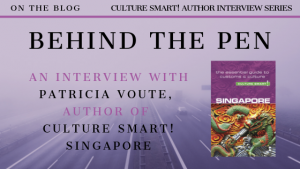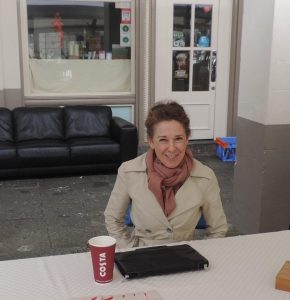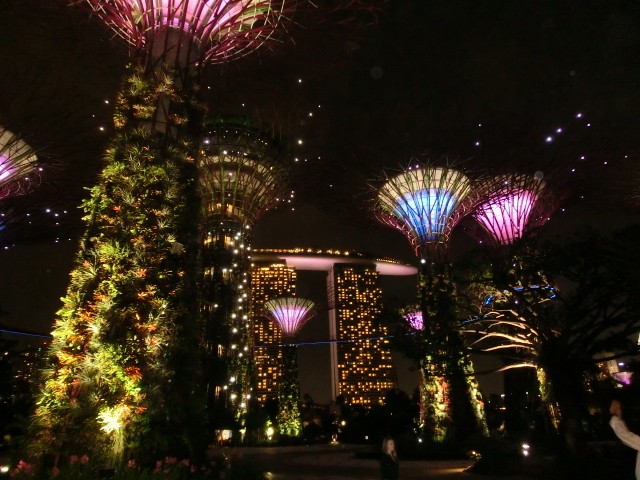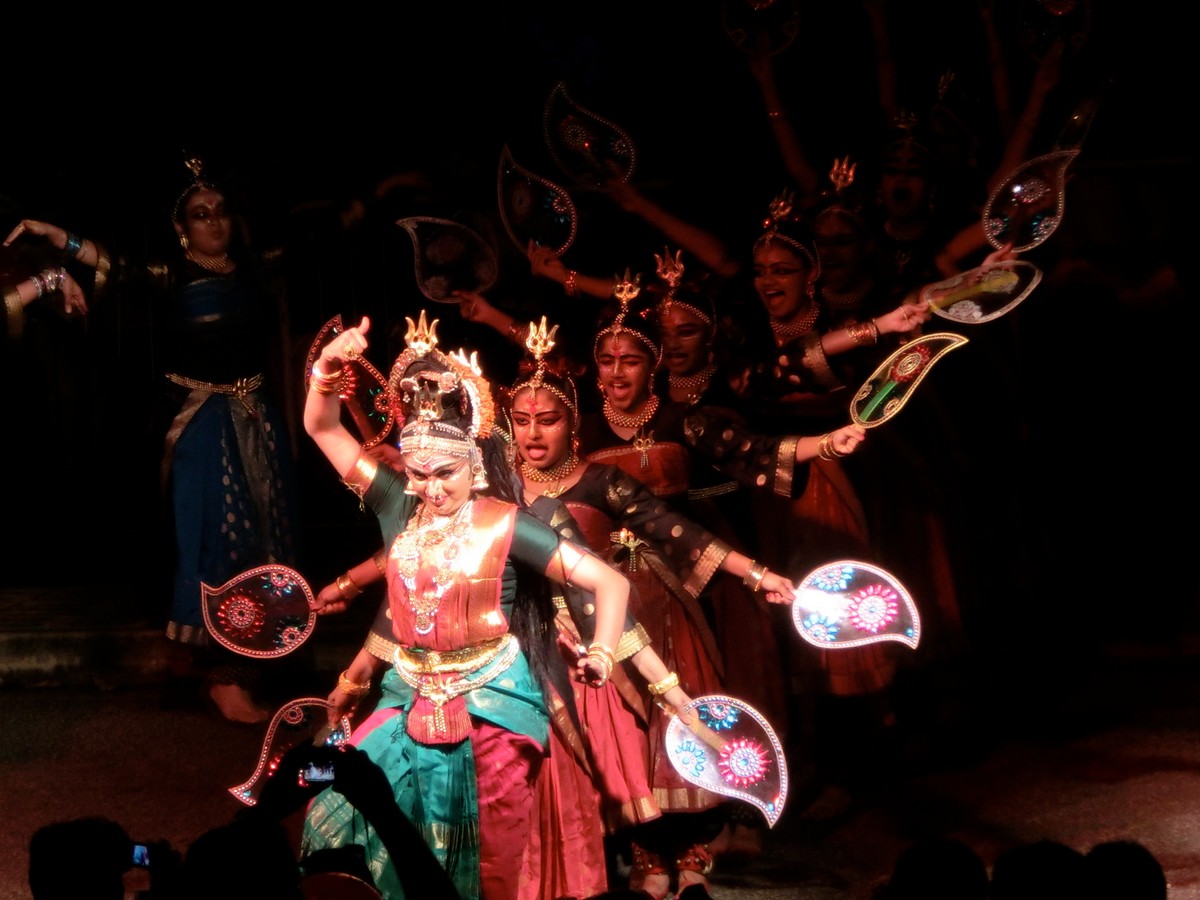
To accompany our new releases we’re returning to our Behind the Pen series of interviews with the authors of Culture Smart!. In the series we take a closer look at who our authors are, how they became conversant in a culture they were not born into, and what they’ve gained from their cultural experiences abroad.
 Meet Patricia Voute – one of the authors of Culture Smart! Singapore. Tricia Voute has a B.A. in Anthropology from Durham University and an M.A. in the Philosophy of Religion from King’s College, London. She has taught philosophy in different parts of the world and written textbooks on the subject, as well as articles on cultural and faith issues in the Times and other publications. Tricia lived in Singapore for five years, teaching religion and philosophy at the Tanglin School. She was involved in teacher training in local schools and has Singaporean friends across the social and religious spectrum.
Meet Patricia Voute – one of the authors of Culture Smart! Singapore. Tricia Voute has a B.A. in Anthropology from Durham University and an M.A. in the Philosophy of Religion from King’s College, London. She has taught philosophy in different parts of the world and written textbooks on the subject, as well as articles on cultural and faith issues in the Times and other publications. Tricia lived in Singapore for five years, teaching religion and philosophy at the Tanglin School. She was involved in teacher training in local schools and has Singaporean friends across the social and religious spectrum.
Interview with Patricia Voute:
How did you first come to be involved in Singapore and Singaporean culture?
I knew of Singapore long before I had any true notion of the country. My father had been stationed there before independence with the Royal Navy and we spent many cold winter evenings sitting around the old projector looking at his photographic slides of the island. He held the people and the culture in high-esteem, and when I discovered that some of my friends had been born there, I was jealous in a strange, inexplicable way. Thus, Singapore existed as this special land on the periphery of my imagination. Many decades later, my brother-in-law was posted to Singapore to work with a local shipping company, and thus began my annual – and often, biannual – visits. Sometime later, I was accepted for a job at the British International School, Tanglin, and I moved to live there myself.
Could you share with our readers an experience you had in Singapore which you think conveys something essential about Singapore and Singaporean culture?
Singapore is a cocktail of many cultures, and though superficially one might be able to point to certain characteristics and say that is essentially Singaporean, on closer inspection it is less obvious. However, anyone that wishes to see Singapore at its noisiest, kitschiest, most colourful, and most commercial, must come at Christmas. Walking down Orchard Road with all its lights and music, fake snow and laughing Father Christmas is an experience that can’t be equaled. Chinese New Year is spectacular, but it is primarily a family affair; expats go on holiday and the shops close. But Christmas is for everyone and anyone. It is a celebration of shopping, and since shopping is a favourite Singaporean hobby, the energy is spectacular.
 Marina Bay, Singapore
Marina Bay, Singapore
On first arriving to Singapore, did you commit any faux pas? What in your opinion do most foreigner’s get wrong?
I remember going to a food court and spying the perfect table. It was empty save for a packet of tissues, so I moved them out of the way and sat down to eat. Soon a woman came over asked me with restrained irritation to move – a packet of tissues left on a table is a common way to reserve it. However, many foreigners misunderstand the Singaporean smile; they either distrust it or fail to use it. But the smile is important and is the best means to avoid confrontation. If you are annoyed with someone, smile and tell them politely your problem. If the authorities stop you: smile! As Westerners, we are direct and often abrasive, and the Singaporeans do not appreciate it. Losing your anger or shouting is frowned upon. Don’t do it! In the same way, we can be overly inquisitive, and I would always advise a visitor to avoid any question that touches on politics or implies a criticism. Remember: don’t do anything that would result in the other person losing face.
Is there a big difference in culture between the younger and older generation of Singaporeans? What would you say is the young generation’s best cultural asset?
Yes, I think so, and the differences are – as always – positive and negative. In one sense, the younger generation have lost touch with the land and possibly do not respect it in the same way as their parents and grandparents (although this is changing). In the past, Singaporeans lived in kampongs, now they live in flats and as a result, they prefer an air-conditioned, highly sanitised life. They are losing their ties to their originating lands and dialects mainly because the Government imposed English as the lingua-franca and Mandarin as the Chinese to be taught in schools. On the positive side, they are international, dynamic, extremely well-educated with a strong sense of national pride. They are highly adaptable and hard-working and have created a country which is unique in south-east Asia. One thing that holds across generations is ‘face’ and the need to keep it.
 Little India, Singapore
Little India, Singapore
What do you miss most about Singapore when you are not there?
I miss the colour, the light, the food, the weather… I miss my flat in the old Army barracks with its large rooms and balcony giving onto a banyan tree. I miss popping down to Little India and getting lost in the Tekka Market, having coffee in Tiong Bahru, searching out ceramics in China Town… I could go on and on!
How would you sum up the Singaporeans in five words?
Unique, dynamic, colourful, noisy, fun.
You can follow Tricia, her writing, teaching, and travels at: www.triciavoute.com. She can also be found on Twitter and LinkedIn.
If you enjoyed reading Tricia’s interview, visit our Singapore page to purchase the full guide:
Book Details:
ISBN: 9781857338874
Format: Paperback
Page count: 168
Dimensions: 171 x 108 x 13mm
Published at: £7.99 / $11.99 / CAN $15.99